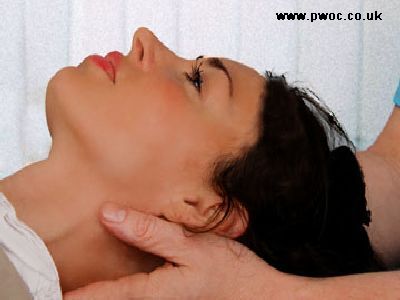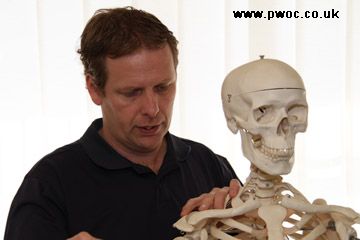Petts Wood Osteopathic Clinic 
What is Fascial Unwinding?
What is Fascial Unwinding? Fascial unwinding is a therapeutic therapy through which the physical and emotional blocks, whatever their cause, can be released. Fascial unwinding presents a way of discovering and releasing the effects of many traumas and tensions, whether recent or long-standing, thus releasing restrictions which may be the deep rooted cause of pain, discomfort or dysfunction and also the maintaining factor which is preventing recovery from a long-standing condtition. Fascial unwinding takes the body, limb, muscle, organ (which ever part is being worked on) through a series of rymthmical movements - often in a spiral pattern - to unwind the tension/trauma stored in it, so as to reset the tissue memory being held in fascial tissue. It is very gentle and sometimes uses the whole body to unwind or just a small area. The movements can be large or small in either case the effects are very dramatic.

"I know of no part of the body that equals the fascia as a hunting ground."; A. T. Still - founder of Ostepathy
Fascia tissue is a connective tissue which surrounds and ensleves every structure in the human body. Each and every muscle, organ, bone, nerve, blood vessel is covered by this thin "clingfilm like" film of fascia. Furthermore all of these structures are interconnected forming a continuous, intergrated sheath of fascia covering the whole body. It is like a spider's web that invades and reaches out to every "nook and cranny" of the body. Therefore, due to this connectivity of the "fascial web", a restriction within any of the systems or structures will have reperussions for the system as a whole. Fascia is the periosteum around every bone, the pericardium surrounding the heart, the pleura covering the lungs, the fascial sheaths enveloping every digestive organ, and the synovial sheaths around every tendon. Not only does fascia support every structure, it also penetrates deeply into many of these structures. Every muscle has its own fascial sleeve but every bundle of muscle fibres and every individual muscle cell has its own individual fascial sheath. Hence another name the "living matrix".

"We live and breathe through our fascia."
The fasciae maintain the anatomical integrity of the individual. A person would retain a perfectly human form even if one removed all the body systems but the fascia. This is also true for the nerves and vascular vessels, as the fascia provide the supporting and guiding structure for both of these systems as well as protection from compression, stretching and other insults. The muscular system only functions by virtue of the fasciae and moreover, it is because of the fasciae that the joints can maintain their stability and function. The fascia and ligaments are usually considered to be a passive element in the neuro-myofascial dynamics of joint stability. The presence of contractile connective tissue cells and the ability of fascia to contract on its own suggests that fascia may play a more active role in joint dynamics and regulation. Fascia has been described as the organ of form as well as the living matrix .
"By its action we live and by its failure we die."
Fascia not only binds and supports, it is also a primary communication channel in the body. In ancient Chinese texts there are references to chi (energy) moving through the fascia. I use the term "fascial living matrix" to refer to this occurrance which has much scientific backing now (see Links page). Effective fascial treatment enhances the balance and flow of energy. Effective energy work enhances tissue quality, body vitality, general health and wellbeing. Energy integration allows for a more holistic approach to treating patients.

In evaluating the fascial restrictions, it is important to view the body as a whole. The continuity and connectivity of fascia are widespread; it is only for the convenience of anatomical text books that it has been labelled as a distinct and seperate entity. Within the fasciae there are innumerable kinectic chains. A disruption at one particular point in any of these chains can have an effect elsewhere (energetically too). Abnormal points of tension, either compression or stretching, within the system force the body to move in different ways, following the path of least resistance. This can lead to poor movements patterns, muscle imbalances, joint restrictions, pain, poor energy levels and decreased vitality.




